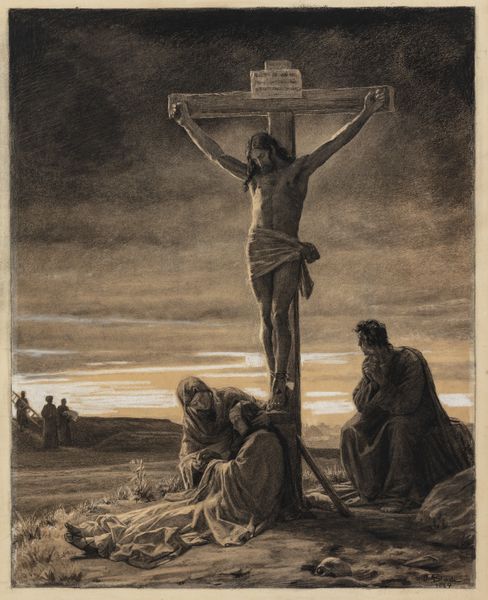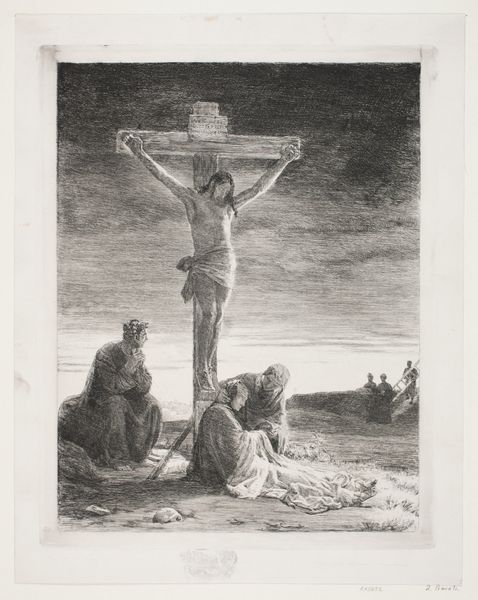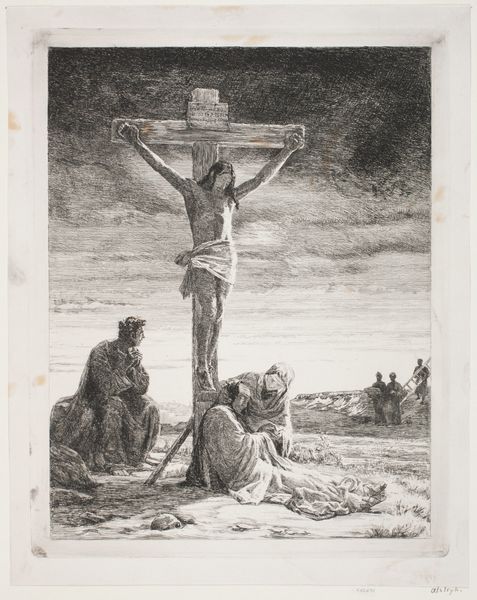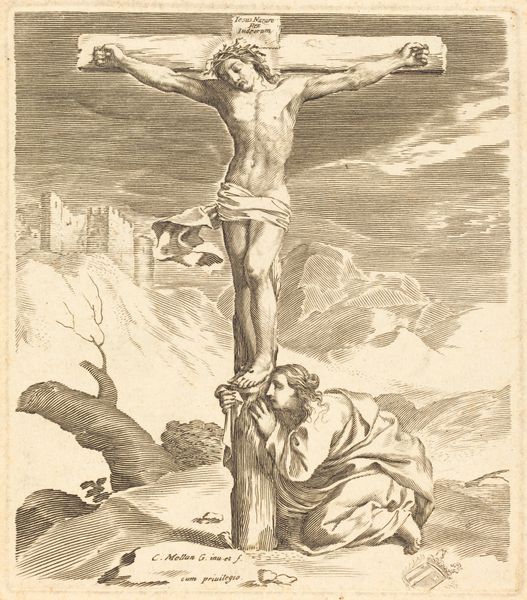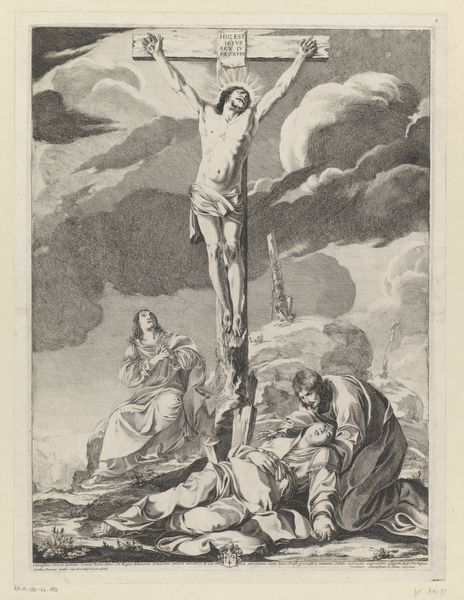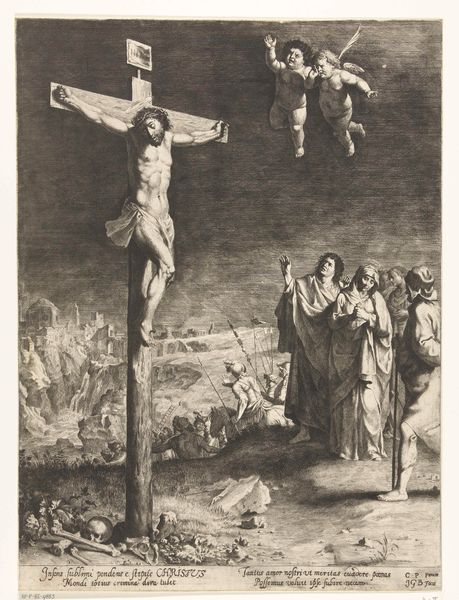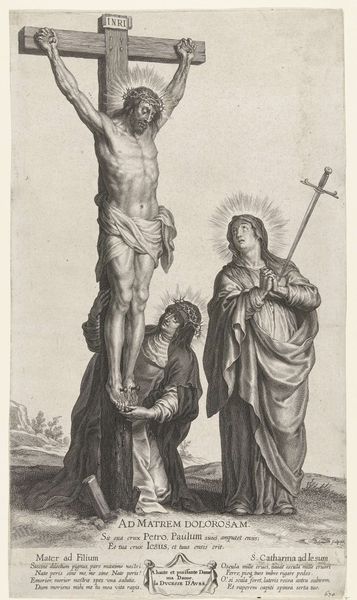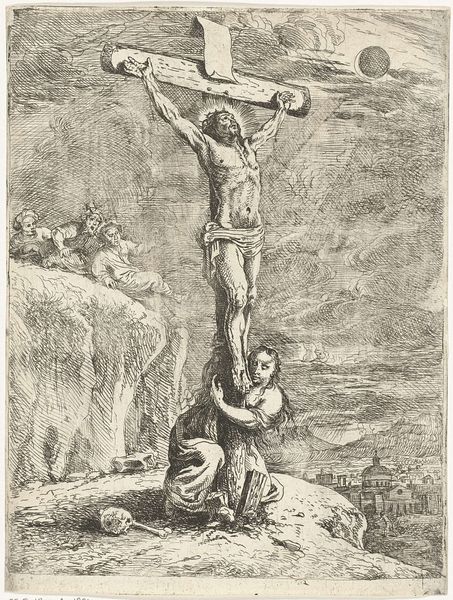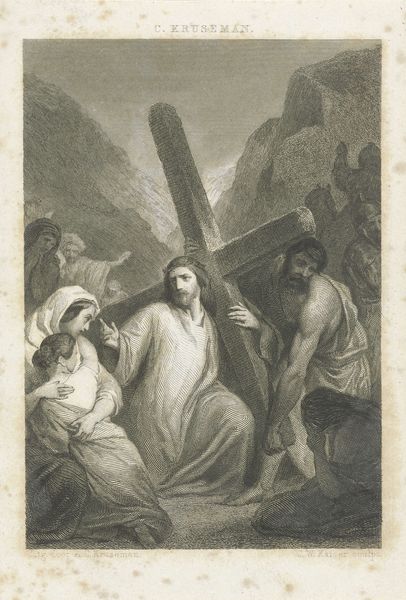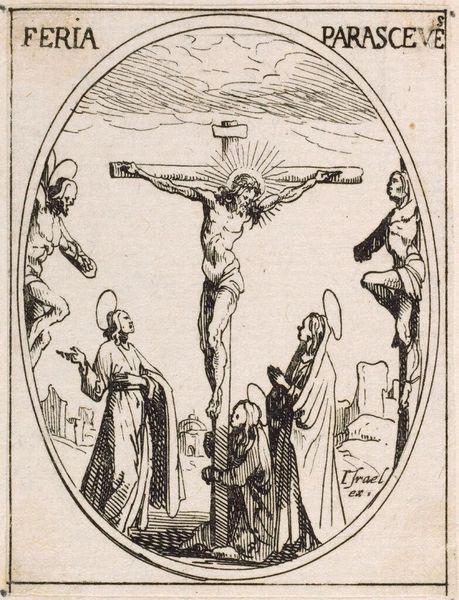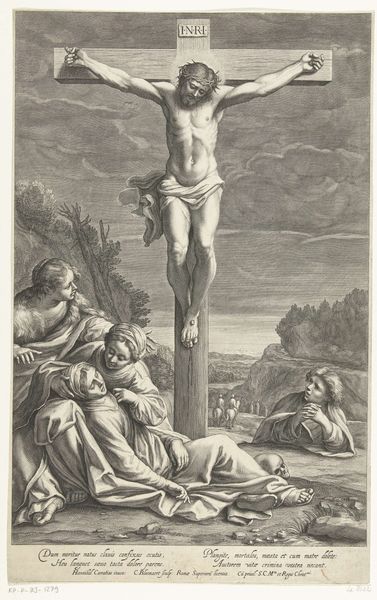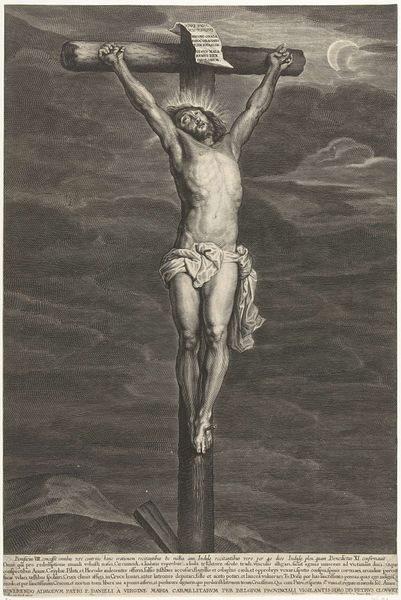
print, etching
#
portrait
#
medieval
#
narrative-art
# print
#
etching
#
figuration
#
history-painting
Dimensions: 359 mm (height) x 288 mm (width) (bladmaal)
Editor: Here we have Carl Bloch's "Christ on the Cross," created in 1884. It's an etching, and it strikes me as intensely sorrowful. The grey tones really amplify the feeling of grief. What do you see in this piece? Curator: Beyond the obvious religious symbolism, I see layers of cultural memory embedded in the image. Consider the skull at the base of the cross – a traditional *memento mori*, a potent reminder of mortality. It connects Christ's sacrifice to the universal human experience of death. Do you think it's simply a morbid image, or is there more to it? Editor: I hadn't considered the skull's deeper meaning. It adds a historical weight, linking to earlier artistic traditions of depicting mortality. Curator: Precisely. Bloch is not just illustrating a biblical scene, but tapping into centuries of artistic and cultural responses to death, sacrifice, and redemption. Notice also how the figures at the base seem both physically and emotionally grounded, almost trapped in their sorrow, while Christ is elevated, literally and symbolically. That juxtaposition… Editor: Highlights the emotional distance between mortal suffering and the divine sacrifice? Curator: In a way, yes. But it also speaks to a larger hope of spiritual transcendence through Christ's act, seen across time and cultures. It is so interesting how Bloch invites us, even today, to meditate on enduring themes through his artistic language. The grief remains universal, but perhaps, so does the promise of salvation. Editor: This has definitely given me a fresh perspective, not just on this artwork, but on how art holds collective memories and cultural significance. Thanks!
Comments
No comments
Be the first to comment and join the conversation on the ultimate creative platform.
